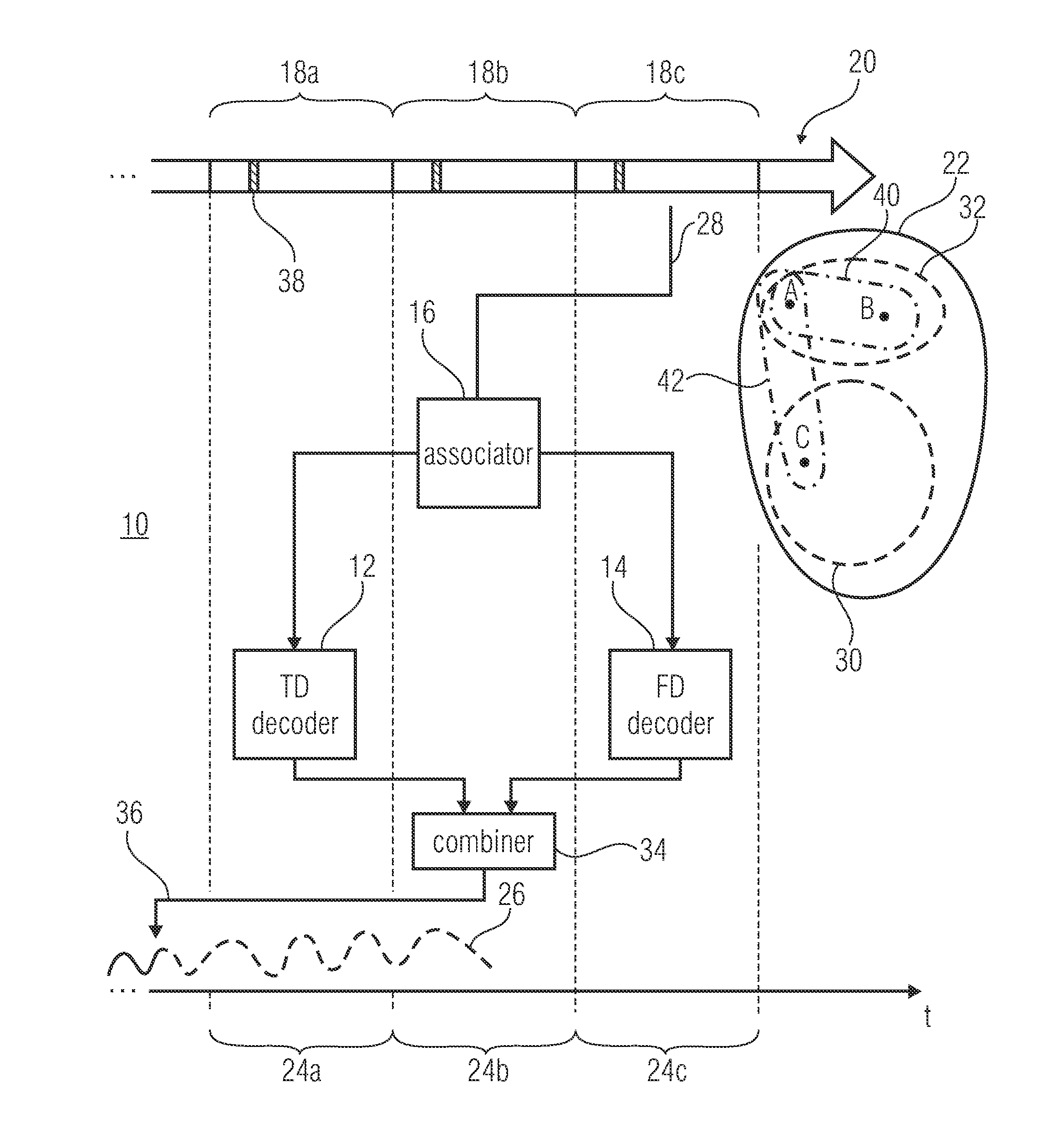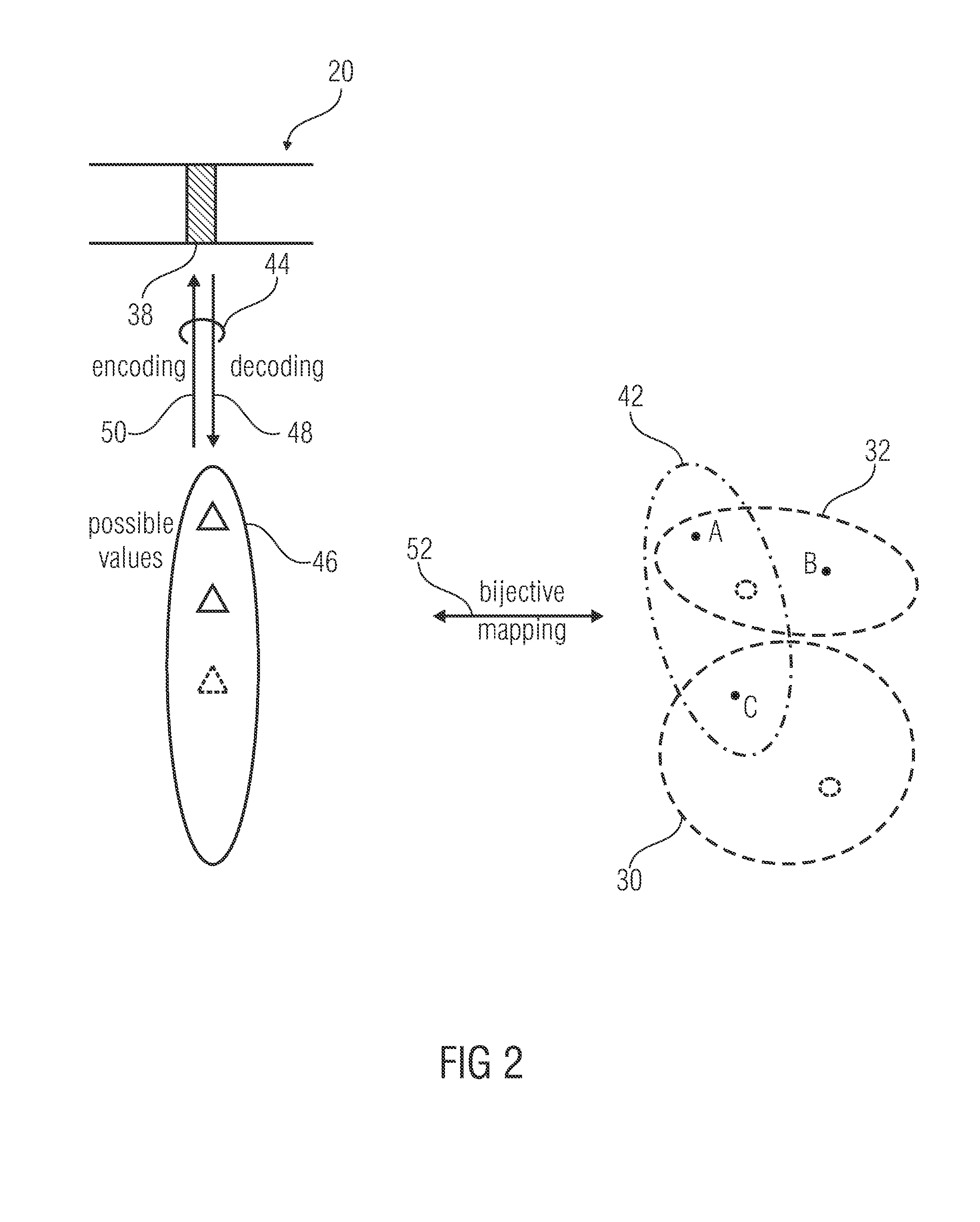Audio codec supporting time-domain and frequency-domain coding modes
a time-domain and frequency-domain coding technology, applied in the field of audio codec supporting time-domain and frequency-domain coding modes, can solve the problems of two-way communication applications, short delays, and inapplicability of mpeg usac codecs, and achieve the effects of increasing coding efficiency, coding efficiency loss, and increasing coding efficiency
- Summary
- Abstract
- Description
- Claims
- Application Information
AI Technical Summary
Benefits of technology
Problems solved by technology
Method used
Image
Examples
Embodiment Construction
[0022]With regard to the description of the figures it is noted that descriptions of elements in one figure shall equally apply to elements having the same reference sign associated therewith in another figure, as not explicitly taught otherwise.
[0023]FIG. 1 shows an audio decoder 10 in accordance with an embodiment of the present invention. The audio decoder comprises a time-domain decoder 12 and a frequency-domain decoder 14. Further, the audio decoder 10 comprises an associator 16 configured to associate each of consecutive frames 18a-18c of a data stream 20 to one out of a mode-dependent set of a plurality 22 of frame coding modes which are exemplarily illustrated in FIG. 1 as A, B and C. There may be more than three frame coding modes, and the number may thus be changed from three to something else. Each frame 18a-c corresponds to one of consecutive portions 24a-c of an audio signal 26 which the audio decoder is to reconstruct from data stream 20.
[0024]To be more precise, the a...
PUM
 Login to View More
Login to View More Abstract
Description
Claims
Application Information
 Login to View More
Login to View More - R&D
- Intellectual Property
- Life Sciences
- Materials
- Tech Scout
- Unparalleled Data Quality
- Higher Quality Content
- 60% Fewer Hallucinations
Browse by: Latest US Patents, China's latest patents, Technical Efficacy Thesaurus, Application Domain, Technology Topic, Popular Technical Reports.
© 2025 PatSnap. All rights reserved.Legal|Privacy policy|Modern Slavery Act Transparency Statement|Sitemap|About US| Contact US: help@patsnap.com



